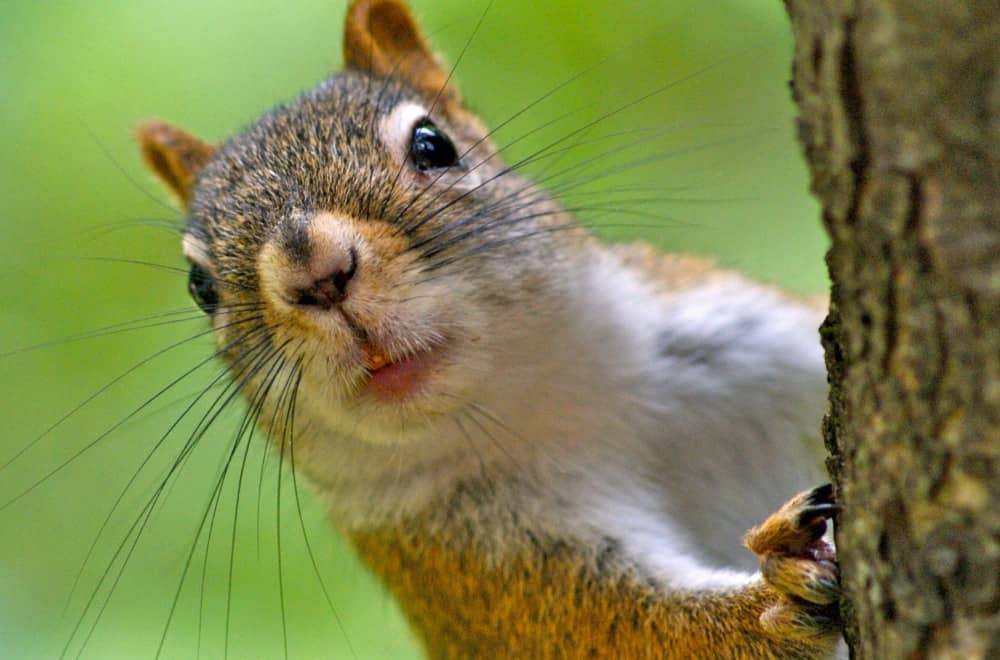Situations and Solutions
Living in a building: Squirrels will take up residence in a building if access is available. They can often be encouraged to leave by placing a strobe light in the attic or building as the strobe is annoying and the squirrel tends to vacate the area. One-way doors over the entry hole to kick the squirrel out is also effective, but only if no young are present. If both of these options fail, you can place a live trap baited with peanut butter, fruit, or nuts near the entrance. Be careful to not block the entrance if the squirrel has young trapped inside the building. Adult squirrels can cause significant damage gnawing to get back inside to their young. If the hole is blocked, open it long enough for the adult to rescue the young then cover it again. Remember that live-trapping is not a final solution. Be sure to close all possible access areas to prevent re-entry.
Trapped inside a home: A squirrel may accidentally enter a home looking for food or may be chased in by a predator, such as a dog. Solutions include quickly and quietly opening a door or window to the outside and then leaving the room.
Trapped in a chimney: A squirrel may fall in a chimney while climbing on the roof. Solutions include securing a rope from the top of the chimney and dropping it down to the fireplace. The rope provides a perfect escape route during daylight hours. After the squirrel has exited, remove the rope and properly cap the chimney. Other solutions include using a live trap baited with peanut butter inside the fireplace.
Interfering with bird feeders: Easily accessible bird feeders provide a source of food for squirrels. Solutions involve installing free-standing (not hanging) bird feeders in sites where squirrels cannot get access. Keep away from shrubs and overhanging tree limbs. Use a pole that is at least 2 m high and attach a metal cone (commercially available) to the pole to prevent squirrels from climbing it.
Carriers of fleas, ticks, and lice: Parasites reside in the fur of squirrels and use the rodent as a host environment. These parasites may carry diseases that can affect humans. Solutions include not handling squirrels and when releasing a live-trapped squirrel and avoid touching it. Wear gloves and long sleeves.
Chewing: If squirrels are chewing on inappropriate things such as cushions or car insulation, a very effective deterrent, called Bobbex, sprayed on the item will prevent further damage.
Natural History
Red squirrels are part of the rodent family. They have brownish-red fur and white underparts. Red squirrels are mostly vegetarian, eating cones, nuts, buds, seeds, fungi and fruit. Red squirrels typically live in trees and build their nests in hollow trunks using moss and twigs to insulate. They use their large, bushy tails for shade from the sun, for warmth in the winter and for balance in climbing and jumping. Red squirrels do not truly hibernate and can withstand severe weather conditions, but they spend long hours in their protective nests during winter.
Red squirrels often fall prey to coyotes, owls, hawks, martens, domestic cats and humans. Their primary defense is the ability to see an approaching predator at a great distance thus escaping to the protection of its burrow.
Squirrels can be attracted to your property by providing adequate food sources such as natural nuts and seeds. Living spaces such as rotted cavities in trees for denning purposes will also do the job.



